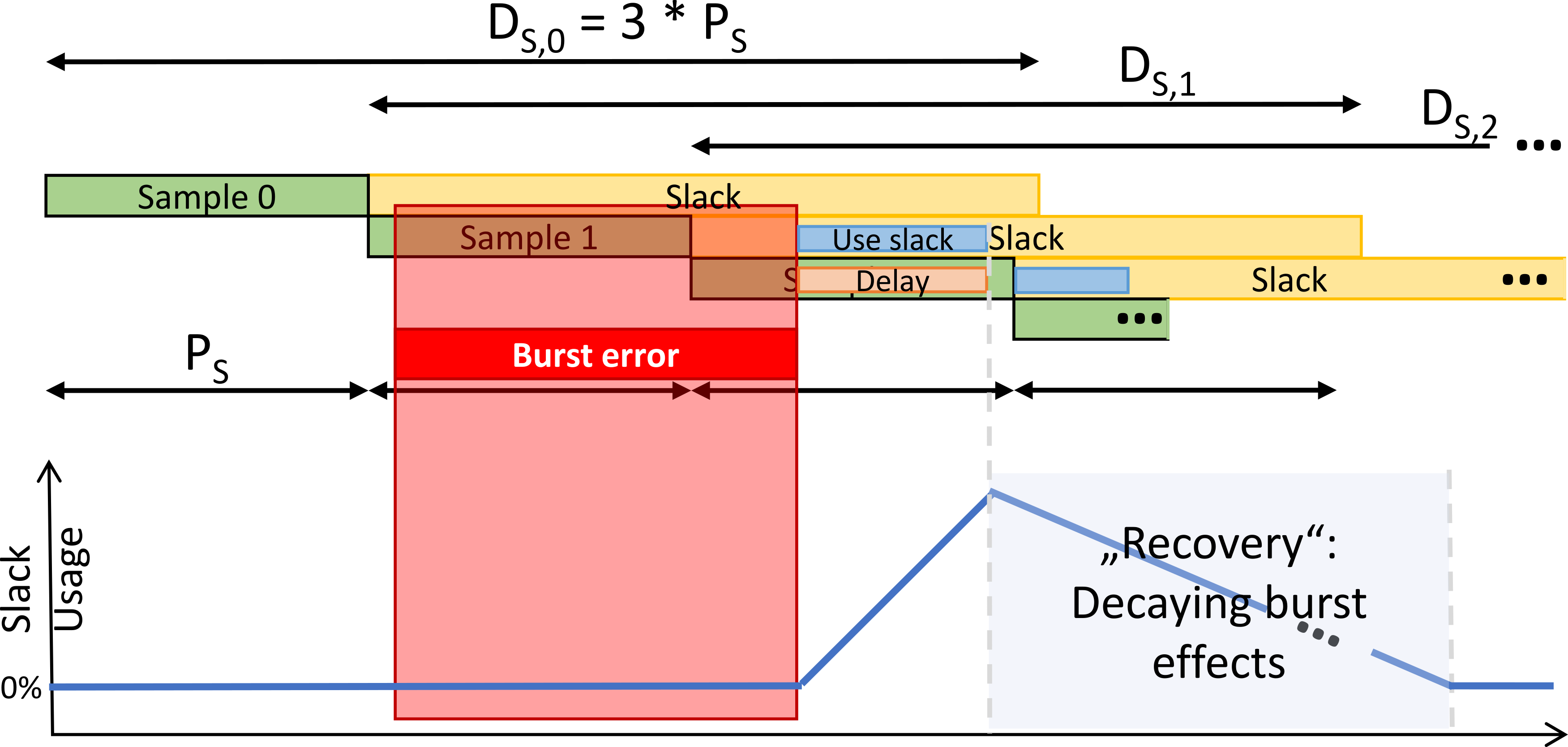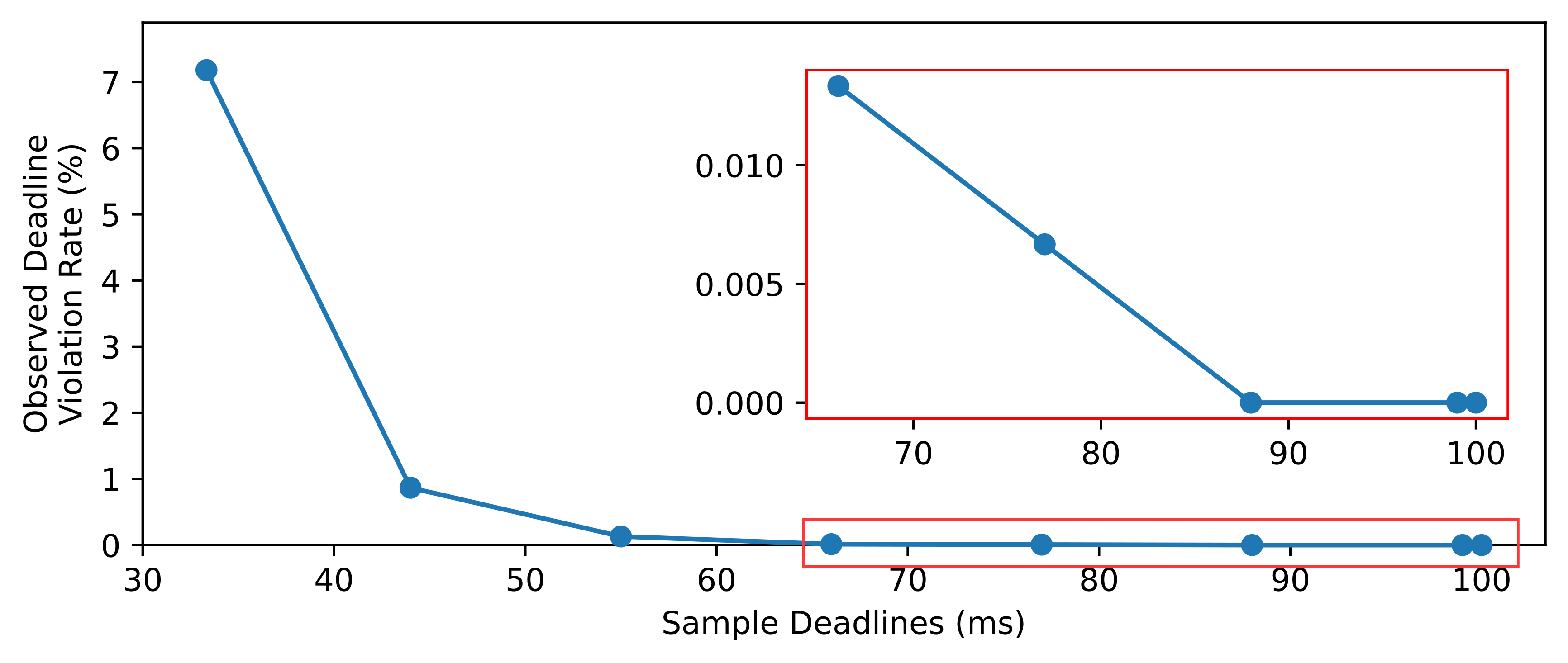Robustness to Burst Errors
So far, previous works on W2RP (and WiMEP) assumed uniformly distributed (bit) errors. However, real-world scenarios can be subject to more sophisticated error conditions. For example, burst errors can occur that put additional strain on the backward error correction (BEC) mechanism of W2RP.
Furhermore, previous W2RP works always assumed the sample period and sample (transmission) deadline to be equal (100ms). However, modern (camera) sensors enable higher sampling rates (period < 100ms), while the application constraints (deadline) remain unchanged. While this leads to deadlines larger than sampling periods, thereby resulting in potentially overlapping sample transmission and error correction of multiple frames, we exploit this fact to improve robustness to burst errors. We refer to the proposed mechanisms as the Enhanced-W2RP protocol (E-W2RP).
Generally, we assume a sample transmission can be finished prior to the next sample arriving (t < period). Nevertheless, with the sample deadline exceeding the period each sample transmission gains additional slack (cf. Figure 1). Hence, if a burst error occurs that affects many consecutive fragment transmissions, this slack can be used to perform additional retransmissions, thereby enabling reliable transmission of sample under such circumstances as well. However, complicating safety considerations is the fact that through usage of additional slack subsequent sample transmissions are delayed due to the resulting overlapping nature of samples. Assuming burst errors do not occur too close after one another burst effects on the sample transmissions decay until the additional slack usage returns to zero, i.e., the systems returned to its most robust state.

We have shown that for a given burst error model (here: Gilbert-Elliot model) and application (+ E-W2RP) parameters the propagation of burst effects can be bounded. Thereby, mathmatical bounds corresponded with measurements from our experiments.
Our experiments (using the IDA Wireless Simulator) clearly showed that using stock W2RP (transmission deadline = period) for high rate sample exchange (30Hz) is not feasible (cf. Figure 2). Using the E-W2RP and extending the transmission deadline significantly decreases deadline violation rates (down to 0% for deadlines > 88ms). Consequently, reliable sample transmission in burst error scenarios is possible.

We further showed that the proposed mechanism can be further used to improve robustness to longer or more frequent bursts. More details on the proposed mechanism, experiments and results can be found in the corresponding paper.
